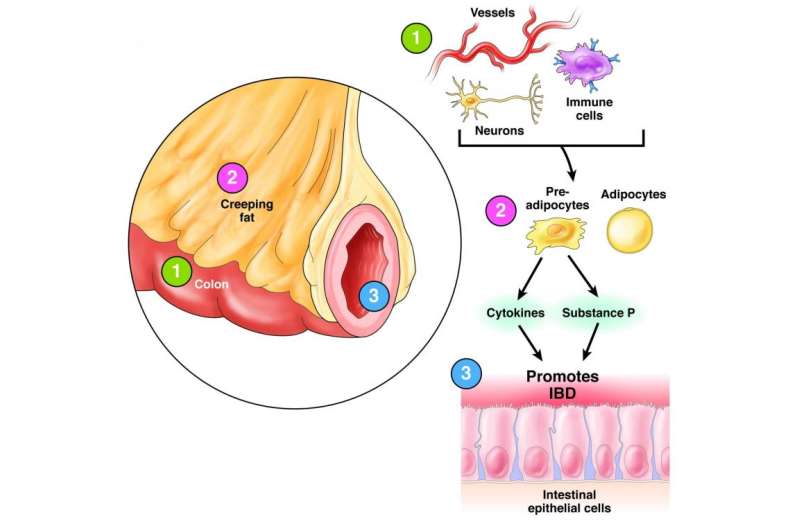The role of intra-abdominal fat in IBD uncovered

Intra-abdominal fat cells may contribute to the development and progression of inflammatory bowel disease (IBD), according to a study1 published in Cellular and Molecular Gastroenterology and Hepatology, the basic science journal of the American Gastroenterological Association.
"A well-appreciated feature of IBD, especially longstanding Crohn's disease, is intra-abdominal fat, also known as 'creeping fat,' which wraps around the intestine. However, it's not clear whether this fat is protective or harmful," said study author Charalabos Pothoulakis, MD, from the University of California, Los Angeles. "Our study offers insight into this phenomenon. We found that intra-abdominal fat cells may normally be programmed to dampen inflammation but, in fact, have acquired a tendency to promote inflammation in IBD."
A major reason the role of creeping fat in IBD has remained elusive is that its study is inherently difficult. Specifically, creeping fat generally does not exist in healthy patients, which makes controlled studies a challenge. To surmount this problem, Dr. Pothoulakis and colleagues isolated and cultured pre-intra-abdominal fat cells from healthy persons and those with IBD, including both Crohn's disease and ulcerative colitis patients. They observed that signaling mediators produced by intra-abdominal fat cells from healthy subjects differ markedly from those produced by intra-abdominal fat cells from patients with IBD. This suggests that intra-abdominal fat is certainly not an innocent bystander in gut immunity and inflammation, but rather an active participant in the process.
Remarkably, the responses of fat cells from ulcerative colitis and Crohn's disease patients differed. Previous observations suggested a possible role of creeping fat in the pathophysiology of Crohn's alone; however, this is the first evidence that intra-abdominal fat tissue may be involved in the development of ulcerative colitis, as well.
Despite anatomic evidence of fat cells' involvement in disease processes, this study is the first to demonstrate differential disease-dependent responses in human fat cells to inflammatory mediators. Future studies are needed to better understand how inflammation promotes generation of creeping fat and the therapeutic potential of targeting fat cells or their products.
"This research provides new insight that may lead to future targeting of intra-abdominal fat cells for therapeutic benefit," said Jerrold R. Turner, MD, PhD, AGAF, co-author of this study and editor-in-chief, Cellular and Molecular Gastroenterology and Hepatology.
More information: Pothoulakis, Charalabos, et al. Substance P mediates pro-inflammatory cytokine release form mesenteric adipocytes in Inflammatory Bowel Disease patients, Cellular and Molecular Gastroenterology and Hepatology 2015: 1(4): 420-432. www.cmghjournal.org/article/S2 … (15)00059-4/abstract


















